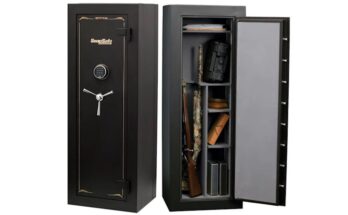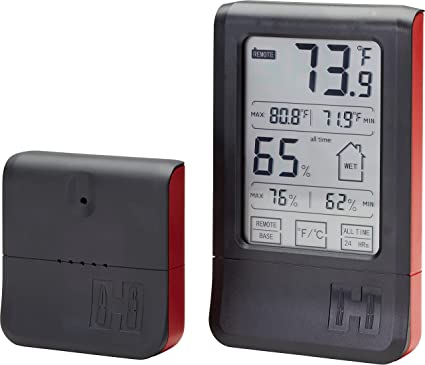Gun safes, which weigh around or less than 500 pounds, can tip over. This becomes riskier if the safe is not bolted correctly. Therefore, it is always advisable to bolt the gun safe on the floor. If you have a lighter one, much of the weight may be toward the front.
So, if you keep the loaded weapons, knives, and other dangerous or valuable items, these contents will make the front load increase. If you need to protect your family member or yourself, make sure you anchor the safe on the floor. Essentially, this is one way to prevent a gun safe from tipping over. Also, it prevents thieves from tipping over and entering and opening the safe.
How To Keep A Gun Safe From Tipping Over?
Preventing a gun safe from tipping over is crucial for both safety and security. Gun safes can be heavy, and their weight can lead to stability issues if not properly secured. Here are some steps to keep a gun safe from tipping over:
-
Choose a Stable Location:
- Select a location for your gun safe that is on a level and stable surface. Avoid placing it in areas prone to flooding or where there is a risk of water damage.
-
Secure to the Floor or Wall:
- The most effective way to prevent a gun safe from tipping over is to securely anchor it to the floor or wall. Most gun safes come with pre-drilled holes for this purpose.
- Use appropriate anchor bolts or fasteners to secure the safe. Make sure the fasteners are suitable for the type of flooring (e.g., concrete or wood) and wall material.
- Follow the manufacturer’s instructions for anchoring the safe, and use the recommended hardware.
-
Distribute Weight Evenly:
- When placing items inside the safe, distribute the weight evenly to prevent the safe from becoming top-heavy. This helps maintain stability.
-
Use Anti-Tip Devices:
- Anti-tip devices, such as L-brackets or wall straps, can provide additional stability by securing the safe to the wall or floor. These devices are especially useful for taller or top-heavy safes.
-
Check the Safe’s Center of Gravity:
- Be mindful of the safe’s center of gravity. Keep heavier items toward the bottom and lighter items toward the top to maintain stability.
-
Professional Installation:
- For larger or particularly heavy safes, consider professional installation. Professionals can assess your space, recommend the best anchoring method, and ensure proper installation.
-
Regular Maintenance:
- Periodically inspect the safe, its anchoring hardware, and the surrounding area to ensure everything remains secure and stable. Tighten any loose bolts or fasteners as needed.
-
Consult the Manufacturer:
- Review the manufacturer’s recommendations and guidelines for safe installation and maintenance. They may provide specific instructions based on the design of the safe.
-
Secure Valuables Inside:
- To prevent shifting of contents that could affect stability, use shelves, racks, or organizers within the safe to keep your items secure and in place.
Remember that a properly anchored gun safe not only prevents tipping but also enhances security by making it more difficult for unauthorized individuals to remove the safe from your premises. If you have any doubts about anchoring your gun safe, consider consulting a professional or contacting the manufacturer for guidance. Safety should always be a top priority when it comes to firearms and gun safes.
Conclusion
The gun safe need to be kept in the right state to prevent it from tipping over. There are several reasons, which include providing additional security. Hard-to-move safes are less broken into or stolen. For instance, you can bolt the safe to prevent it from accidentally tipping over, which can cause injury. Likewise, it is recommended to bolt the gun safes for full use. Also, installing it can be done without the help of professionals.
Related Post:
How To Secure A Gun Safe Without Bolting It To The Floor?



